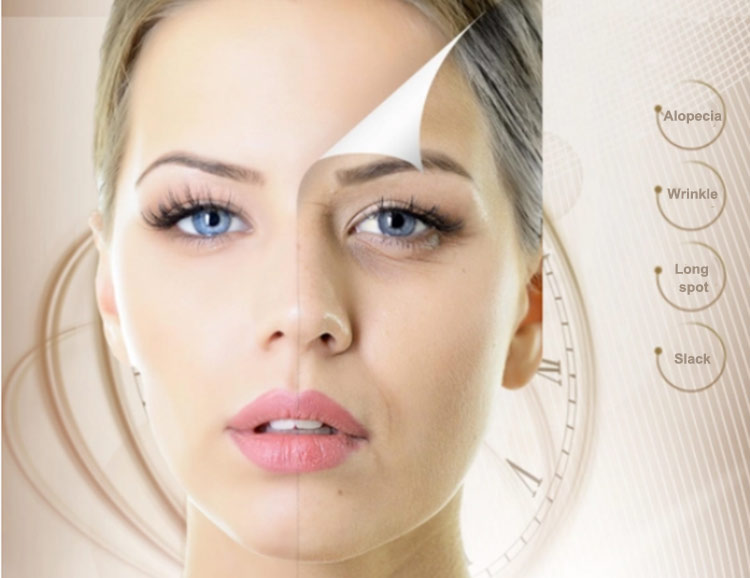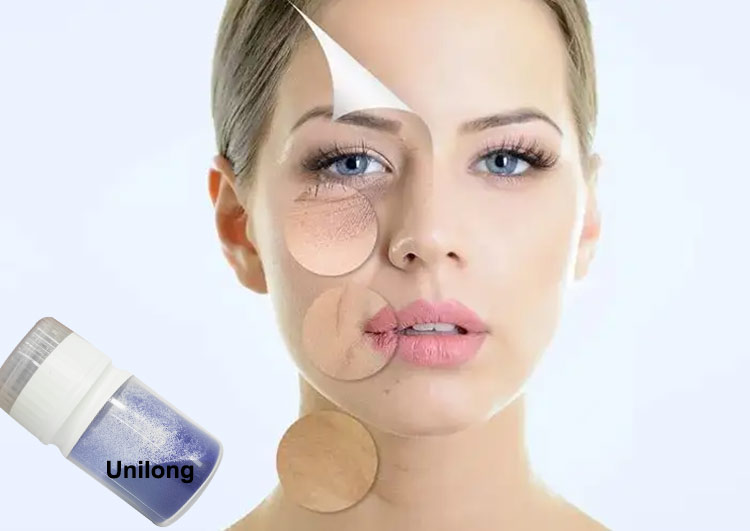As we all know, copper is one of the essential micronutrients for human health and maintenance of body functions. It has a very important impact on the development and function of blood, central nervous system, immune system, hair, skin and bone tissues, brain, liver, heart and other viscera. In adults, the content of copper in 1kg body weight is about
1.4mg-2.1mg.
What is GHK-CU?
GHK-Cu is G (Glycine glycine), H (Histidine histidine), K (Lysine lysine). The three amino acids are connected to form a tripeptide, and then a copper ion is connected to form the commonly known blue copper peptide. The INCI name/English name is COPPER TRIPEPTIDE-1.
Main Functions of Blue Copper Peptide
Restores skin repair ability, increases the production of intercellular mucus, and reduces skin damage.
Stimulate the formation of glucose polyamine, increase skin thickness, reduce skin sagging, and firm skin.
Stimulate the formation of collagen and elastin, firm the skin and reduce fine lines.
It assists in antioxidant enzyme SOD and has strong anti free radical function.
It can promote the proliferation of blood vessels and increase the oxygen supply of skin.
Use of GHK-CuD
1. Raw materials are too expensive. The general market price ranges from 10-20W per kilogram, and the higher purity even exceeds 20W, which limits its large-scale use.
2. Blue copper peptide is unstable, which is related to its structure and metal ions. Therefore, it is sensitive to ions, oxygen and relatively strong light irradiation. This alone limits the application of many brands.

Taboos of blue copper peptide
1. Chelating agents such as EDTA disodium.
2. Octyl hydroxamic acid is a new anti-corrosion alternative ingredient, which is widely used to replace traditional preservatives.
It can keep no ionized state in the whole process from acid to neutral, and is the best antibacterial organic acid. It has excellent antibacterial and bacteriostatic properties in neutral pH, and the compound polyol can achieve the effect of spectrum bacteriostasis. However, if used in products containing blue copper peptide, it can chelate copper ions in copper peptide to form more stable copper complexes. Therefore, it is a special organic acid that makes blue copper peptide ineffective.
In the same way, most acids have similar effects. Therefore, when using the formula of blue copper peptide, the liquid should avoid such raw materials as fruit acid and salicylic acid. When using products containing blue copper peptide, it is also necessary to avoid simultaneous use with products containing acid.
3. Nicotinamide contains a certain amount of nicotinic acid, which can seize copper ions with blue copper peptide to make the product discolor. The content of nicotinic acid residue in nicotinamide is proportional to the speed of discoloration. The higher the content, the faster the discoloration is, and vice versa.
4. Carbomer, sodium glutamate and other similar anionic polymers will polymerize with cationic copper ions, destroy the copper peptide structure and cause discoloration.
5. VC has strong reducibility, and is easily oxidized to dehydrogenated VC. Copper will oxidize VC, and its own structure will be changed to be ineffective. In addition, glucose, allantoin, compounds containing aldehyde groups and blue copper peptide can also be used together, which may cause discoloration risk.
6. If carnosine is not used together with blue copper peptide, it will produce chelation and risk discoloration.
GHK itself is a component of collagen. In the case of inflammation or skin damage, it will release a variety of peptides. GHK is one of them, which can play a variety of physiological roles.
When GHK is not used as a copper ion carrier, it is also a part of collagen degradation products. Therefore, it can be used as a signal factor to stimulate the antioxidant process. It has anti-inflammatory and wrinkle reducing effects on the skin, making the skin more compact.
Post time: Dec-08-2022


